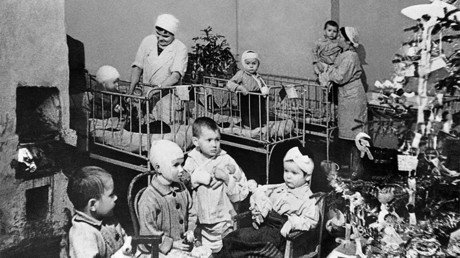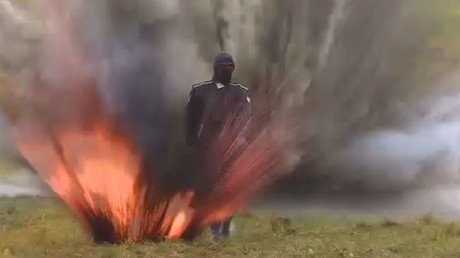Troops parade in St. Petersburg to mark 75yrs since end of Leningrad Siege in WWII (PHOTO, VIDEO)
Troops and heavy armor paraded through the iconic Palace Square in St. Petersburg to mark 75 years since the end of the Nazi siege of Leningrad, which lasted 872 days and claimed hundreds of thousands of lives.
Despite the chilling cold that has hit St. Petersburg, people flocked to Palace Square to commemorate the end of the Siege of Leningrad. Sunday morning’s parade marks the historic event and pays tribute to the victims.
“The Siege of Leningrad is one of the most tragic and heroic parts of [World War II],” General Aleksandr Zhuravlev, a commanding officer in charge of the parade, said before observing a minute of silence.
Opening the parade, soldiers from all branches of service, including the army, navy, and air force, marched in formation. The historical part of the parade involved troops wearing Red Army uniforms.
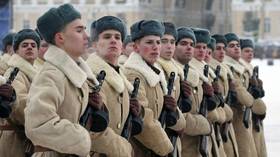
They were followed by an array of WWII-era armor, including the famous T-34 battle tank, armored fighting vehicles, and trucks.
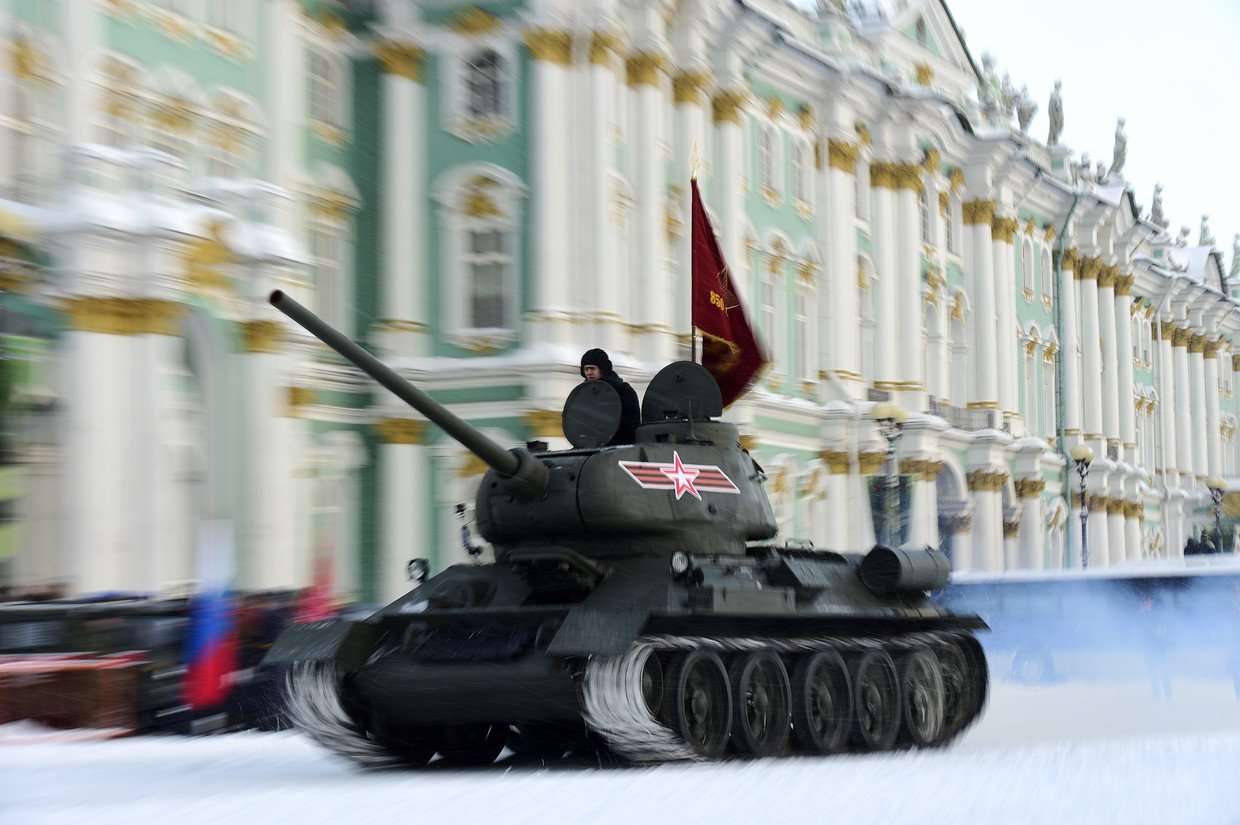
Modern-day military equipment was also on display. T-72B3 main battle tanks, BMP-3, and BTR-82A armored vehicles were all present.
These vehicles were joined by other weapons systems, including S-400 surface-to-air missiles, Iskander rocket launchers, and Tornado multiple launch rocket systems, the Russian military said.
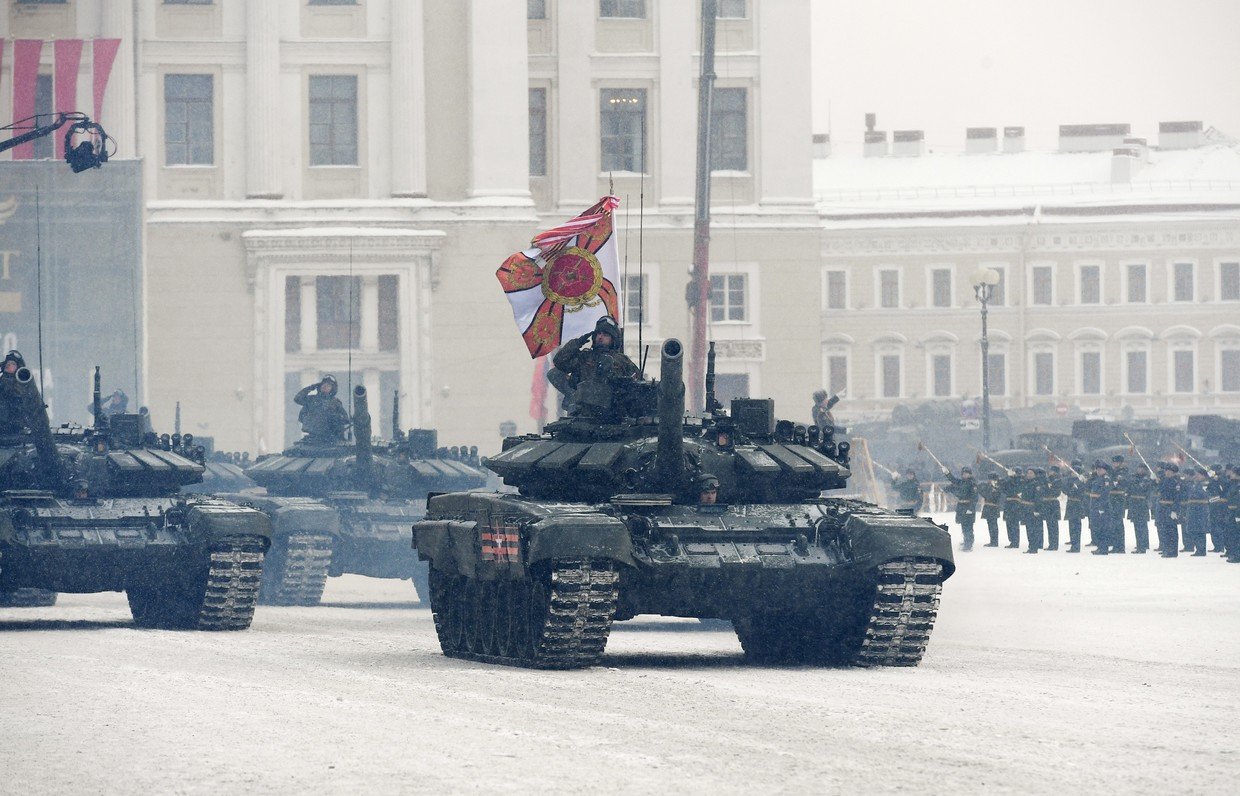
As the parade drew to a close, six MiG-29 fighter jets from the famous Strizhi (Swifts) aerobatic team flew over St. Petersburg.
The Siege of Leningrad, one of the longest and bloodiest sieges in history, started on September 8, 1941, when the Germans severed the last road leading to the city. Simultaneously, the Finnish Army crossed the Soviet border from the north, assisting their Nazi allies in blockading Leningrad.
Hitler’s plans for Leningrad – the former imperial capital and cradle of three Russian revolutions – meant that all the residents would eventually die due to starvation, illness, or injuries due to bombing.
Witnesses and historians recall that the first winter of 1942 was the toughest, with Leningrad residents having to survive with no heating, no supply of water, almost no electricity, and very little food. At that time, every citizen would receive 125 grams of bread per day, nearly half of which consisted of sawdust and other inedible mixtures.
During the blockade, all major supply lines were cut by Nazi troops. The legendary ‘Road of Life’ was the sole exception. Running across the ice of Lake Ladoga, it allowed food, ammunition, and medical supplies to be brought into the besieged city. On their way back, military convoys would evacuate civilians and injured soldiers.
Somehow, the city survived, and its heroic 872-day resistance ended in 1944, becoming a symbol of unparalleled resilience and determination. But the lifting of the blockade came too late for many, as, according to various estimates, it claimed the lives of up to 1.5 million people. Most of them died of hunger, while others were killed by German bombs and artillery shells.
Subscribe to RT newsletter to get stories the mainstream media won’t tell you.
